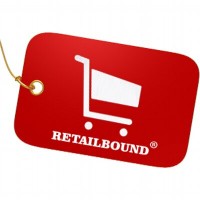Whether you follow my posts or you’re a first-time reader, I’m all about helping smaller consumer goods manufacturers navigate and understand retail. Each of my posts is based on conversations I have with real businesses and more importantly real people with real challenges growing product sales.
 Every manufacturer has different needs which is why there’s no “right” way to effectively grow from a start-up with a cool product to a multi-million dollar company with placement in all the major retailers.
Every manufacturer has different needs which is why there’s no “right” way to effectively grow from a start-up with a cool product to a multi-million dollar company with placement in all the major retailers.
This post is about finding ways to utilize your current resources, time, and money more effectively – because in the cut-throat world of retail working smarter is a necessity.
What do you mean by internal advantages?
Internal advantages can vary significantly for a business whether it be technological advantages in communications, deep or well-rounded expertise, or perhaps it’s simply your company culture to motivate and retain employees.
Basically, what sets your business apart from all the others out there besides external factors like capital raised, product features, or number of reps? I’m sure you’ve seen how promising start-ups and even large companies can go under or take a big hit in sales despite appearing very strong.
 What’s usually the cause? Internal issues and inefficiencies. See this recent GoPro example or look up countless crowdfunded failures.
What’s usually the cause? Internal issues and inefficiencies. See this recent GoPro example or look up countless crowdfunded failures.
Of course you need a balance of both external and internal advantages to survive in retail – just as you need to work both hard AND smart. So where should you start looking to improve and scale your business?
Where can you start leveraging advantages?
Regardless if you’re investing in real estate or running a product-based business you need to figure out where your strengths and weaknesses are. Where and how is your time best spent? Are you really good at acquiring new buyers or are you great at developing innovative new products?
 Just like when your house needs a new paint job, deciding to do it yourself is a question of both time and money.
Just like when your house needs a new paint job, deciding to do it yourself is a question of both time and money.
When we look specifically at retail, there’s a huge amount of tasks to cover within this process; however, one of the quickest areas to be filled is the sales role. While finding reps is a good first-step, there are multiple caveats with this.
- Anyone can hire a sales rep, so why aren’t all products successful? The commission-only factor is appealing and “risk free” but where you’re not risking money, you’re risking time.
- Distinguishing between good and bad reps can be a matter of incentive, number of products they represent, experience, existing connections, etc.
Growing product sales internally
Most people forget that consumer demand determines the real growth of your business. Ultimately it doesn’t matter whether you have 10 retail channels or 1,000 channels or even if you’re with big box or just specific distributors. What if those 10 channels were pushing just as many products as the hypothetical 1,000 channels?
Having more channels can help reach more consumers but the cost of time managing more channels and communicating with reps and existing buyers  each day should be accounted for. If emailing reps, calling existing buyers, or managing inventory across your channels takes up 10 hours a week… what could you be spending that time doing instead?
each day should be accounted for. If emailing reps, calling existing buyers, or managing inventory across your channels takes up 10 hours a week… what could you be spending that time doing instead?
Once you’ve established some retail channels (online or offline) and placed products on the shelf, moving efforts towards sell-through and increasing sales with existing buyers will ensure healthy long-term growth. This boils down to a balance of sell-in and sell-through.
Sell-through takes resources, creativity, and systems in place but it’s the life blood of your business. I’ve devoted many posts to the idea of sell-through as you can see here.
Taking advantage of existing internal advantages:
It’s no secret that I work at Retailbound, a retail marketing & consulting company west of Chicago. We’re not a sales agency or a PR firm. We’re designed for those who don’t want to spend time managing & executing day-to-day retail activities.
With 20+ years as retail buyers and manufacturers, we’ve been spending
decades driving sell-through, training reps, managing channels and building retail relationships throughout the United States with big box down, small distributors, and B2B channels.

Getting into retail is tough, but what’s tougher is staying there for 10, 20, 30 years with increasing shelf space.


